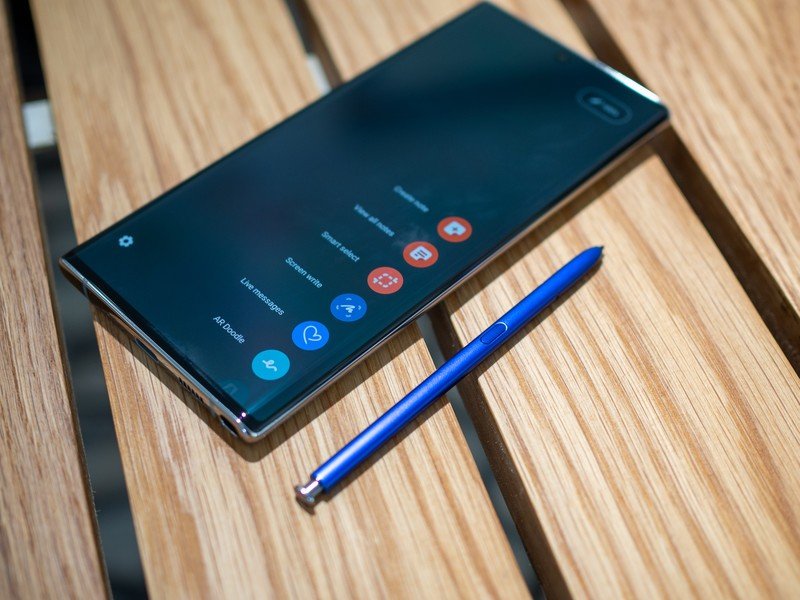How does Samsung's S Pen work so damn well?

The Galaxy Note isn't just a big phone, it's Samsung's cream of the crop. It always ships with the best hardware and software Samsung has to offer, and the latest Galaxy Note 20 is no exception. The Note is the Galaxy phone for people who want it all, or as close to "it all" as they can get. Part of that — a big part for many — is the S Pen.
Forget the idea that "nobody wants to use a stylus," because that's clearly incorrect. A lot of users want to use some sort of pen on their go-to device, and we've seen Microsoft, Apple, and Google all offer a pen input device of some sort on their flagship devices since the Note appeared. It can be convenient for jotting down notes, or used for annotation in a presentation, or even just used for doodling — and it works really well.
If you've never used the S Pen you'll be surprised by how well it works.
And that's the secret of its success; it works really well. If you've never used the S Pen you might think it's like using an after-market stylus you can buy from Amazon, and you'd be dead wrong. The S Pen is super fluid, and while it doesn't feel exactly like drawing or coloring on paper, it's pretty darn close. That's because it's completely integrated into the Galaxy Note, not just an add-on.
A regular stylus you buy is a capacitive input device. The screen on your phone is made from an insulator (glass in most cases) that also serves as the hard outer surface. This insulator is coated with a clear electrical conductor. Your finger, along with a "normal" stylus, is also an electrical conductor, and when you touch the screen its electrostatic field is changed. The processor and OS in your phone take this data and turns it into a tap, long-press, dragging action, or whatever else you did with your finger or stylus.

The S Pen is an inductive stylus. The display on the Note has what's called an active digitizer under the glass. When the S Pen gets close to the screen, the magnetic field of the active digitizer induces a current that powers its internal circuitry. Power is passed here just like a wireless charging mat, it's just not inducing nearly as much power.
The S Pen is an inductive device and needs special hardware built into the Note display.
When the S Pen is energized, the tiny circuitry inside of it does much of the work when writing or drawing. The digitizer layer on your phone has only one job — keep track of where the tip of the S Pen is. The Pen doesn't need to touch the screen for this to happen, which is important because the touching action is what triggers the software to write or draw on the screen. The screen knows where the Pen is touching and tracks its movements and the Pen itself tells the software that it is drawing a line. The software draws the line on your screen and you see what you're drawing or writing as it happens.
This is far more accurate than a capacitive stylus could ever be. It's why the S Pen won't work as a stylus on any other phone — it's not an electrical conductor. It's also why the S Pen, or Apple Pencil, or Pixel Pen, or Surface Pen, etc. work so much better than a "regular" stylus.
Be an expert in 5 minutes
Get the latest news from Android Central, your trusted companion in the world of Android
The Note 9 added some new functionality through the S Pen by pairing it over Bluetooth, and these features have continued through to the Note 20. You can use the side button to snap a photo or present a slide deck or trigger whatever a developer can dream up. But this doesn't change or interfere with the way the S Pen works to draw on the screen. It just makes it better.
A capacitive stylus works on every touchscreen. They just don't work very well.
A capacitive stylus, like this one from Amazon, can be useful. I have a pair of these and use them for rough drawing or scribbling on a phone every now and then, and they can be useful when trying to select text on a phone with a small screen. The good thing about them is that they will work on any device that has a touchscreen — even the Galaxy Note.
But if you want to do any fine drawing or have a lot of writing to do, nothing comes close to a good inductive pen setup like the Galaxy Note series has. You can find capacitive styli that pair through Bluetooth to try and track movement like the S Pen does (those are called an active stylus and Android supports them in full), but they still aren't as precise or accurate. Not by a long shot.
There are other reasons to want a Galaxy Note, but if you want a good Pen experience, it's really the best phone to get. And that's because Samsung has made the Pen part of the phone through both hardware and software.

Jerry is an amateur woodworker and struggling shade tree mechanic. There's nothing he can't take apart, but many things he can't reassemble. You'll find him writing and speaking his loud opinion on Android Central and occasionally on Threads.
